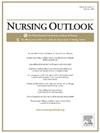交叉性视角下的健康促进:一个中程理论的推导
IF 3.7
2区 医学
Q1 NURSING
引用次数: 0
摘要
健康促进仍然是护理实践和政策的中心目标。然而,传统方法往往忽视了重叠的社会身份和结构不平等如何影响健康结果。交叉性为理解这些复杂的动态提供了一个关键的框架。目的从交叉的角度推导一个解释健康促进的中程理论(MRT),目的是为护理实践提供信息和促进健康公平。方法本理论反思性定性研究遵循Walker和Avant(2019)概述的推导方法来构建MRT。对交叉理论和健康促进文献中的关键概念进行分析和综合,以建立一个适用于护理的解释模型。该理论围绕两个中心结构:(1)交叉性和健康促进:概念关系,探讨种族、性别、阶级和领土等社会标记与健康之间的相互作用;(2)流向公平和最大健康潜力,这是一个隐喻模型,说明了结构性力量如何影响健康促进“河流”中的个人轨迹。该框架强调了护理干预的场所,以打破不公平现象,并加强流向最佳健康。结论:将交叉透镜应用于健康促进,可以识别隐藏的模式、驱动因素和干预机会。提出的理论通过指导以公平为重点的战略的发展来支持护理实践,这些战略解决了结构性决定因素,并确保所有人,特别是那些历史上被边缘化的人,都能实现最大的健康潜力。那又怎样?这一理论的应用通过考虑不同社会标记(如种族、性别、阶级和领土)之间的相互作用,有助于更公平的健康促进政策和实践。这样,它就能够制定战略,解决结构性不平等问题,促进更全面的积极影响,确保历史上处于边缘地位的群体充分发挥其最大的健康潜力。本文章由计算机程序翻译,如有差异,请以英文原文为准。
Health promotion from the perspective of intersectionality: Derivation of a middle-range theory
Background
Health promotion remains a central goal in nursing practice and policy. However, conventional approaches often overlook how overlapping social identities and structural inequities influence health outcomes. Intersectionality provides a critical framework for understanding these complex dynamics.
Purpose
To derive a middle-range theory (MRT) that explains health promotion from an intersectional perspective, with the aim of informing nursing practice and advancing health equity.
Methods
This theoretical-reflective, qualitative study followed the derivation approach outlined by Walker and Avant (2019) to construct a MRT. Key concepts from intersectionality theory and health promotion literature were analyzed and synthesized to develop an explanatory model applicable to nursing.
Discussion
The theory is structured around two central constructs: (1) Intersectionality and Health Promotion: conceptual relations, which explores the interplay between social markers, such as race, gender, class, and territory, and health; and (2) Flowing towards Equity and Maximum Potential in Health, a metaphorical model that illustrates how structural forces affect individuals’ trajectories within the "river" of health promotion. This framework highlights sites for nursing intervention to disrupt inequities and enhance the flow toward optimal health.
Conclusion
Applying an intersectional lens to health promotion allows for the identification of hidden patterns, drivers, and opportunities for intervention. The proposed theory supports nursing practice by guiding the development of equity-focused strategies that address structural determinants and ensure that all individuals, particularly those historically marginalized, can achieve their maximum health potential.
So What?
The application of this theory contributes to more equitable health promotion policies and practices by considering the interactions between different social markers, such as race, gender, class, and territory. In this way, it enables the formulation of strategies that address structural inequalities and promote a more comprehensive positive impact, ensuring that historically marginalized groups have full access to their maximum health potential.
求助全文
通过发布文献求助,成功后即可免费获取论文全文。
去求助
来源期刊

Nursing Outlook
医学-护理
CiteScore
6.20
自引率
7.00%
发文量
109
审稿时长
25 days
期刊介绍:
Nursing Outlook, a bimonthly journal, provides innovative ideas for nursing leaders through peer-reviewed articles and timely reports. Each issue examines current issues and trends in nursing practice, education, and research, offering progressive solutions to the challenges facing the profession. Nursing Outlook is the official journal of the American Academy of Nursing and the Council for the Advancement of Nursing Science and supports their mission to serve the public and the nursing profession by advancing health policy and practice through the generation, synthesis, and dissemination of nursing knowledge. The journal is included in MEDLINE, CINAHL and the Journal Citation Reports published by Clarivate Analytics.
 求助内容:
求助内容: 应助结果提醒方式:
应助结果提醒方式:


